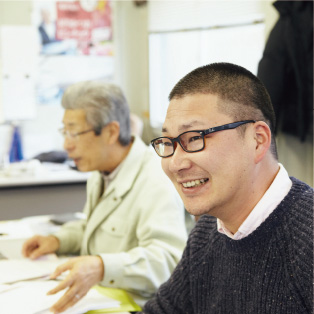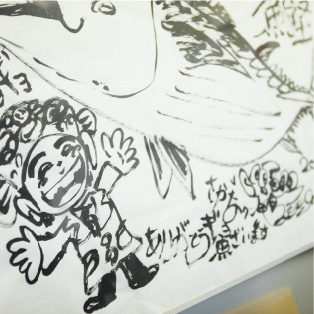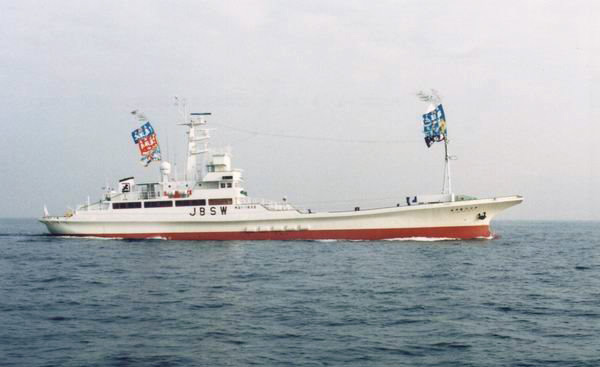
Kaneshimeichi
Co.,Ltd.
988-0002 1-64-3 Kawaguchi, Kesennuma-shi, Miyagi
Kaneshimeichi Co., Ltd. CEO: Katsuro Oyama
TEL:+81-(0)226-22-3313
FAX:+81-(0)226-22-5789
e-mail:ikaneshimeichi@brigde.ocn.ne.jp
Fishermen from the fishing boat Kiyo Maru catch delicious fish using a pole
Fish are hooked and lifted with a pole, one after another, onto the “Kiyo Maru.” This pole-and-line fishing boat is equipped with a freezer and the fish caught are quickly frozen on the spot. This traditional fishing method keeps the freshness, flavor and color of the fish after they have been caught.
Taste and materials
Bonito and tuna caught in this way off the Sanriku coast and in the seas south of Japan are quickly frozen at sea. Exceptionally fresh fish are delivered to the market with the original flavor retained.
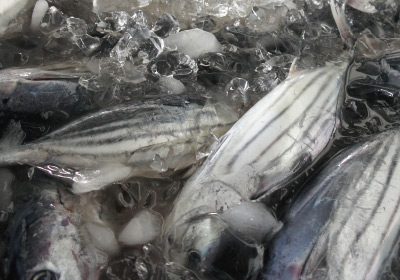
Equipment
Kiyo Maru is a “factory on the sea” for Kaneshimeichi and it allows on-board quick freezing of fish by brine freezing technology.
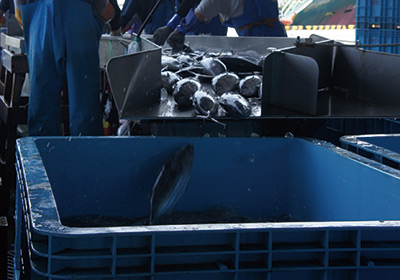
Advisor: Shuji Oyama
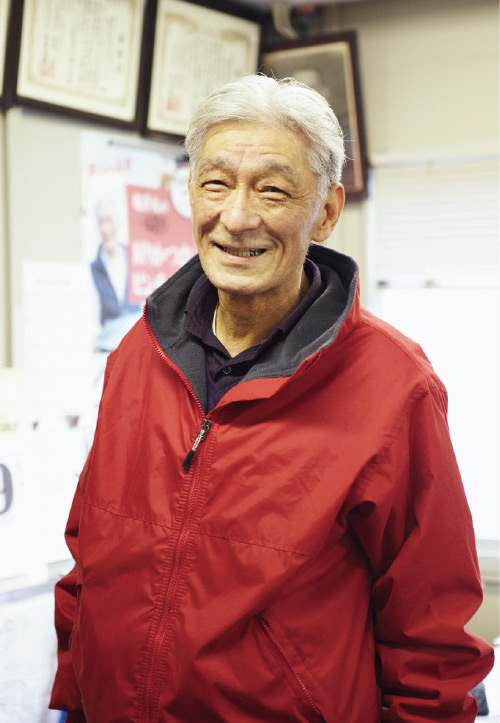
“On the Kiyō Maru at sea, Fishing for deliciousness one catch at a time.”
Kaneshimeichi Co., Ltd. President Adviser: Shuji Oyama
“Sourced from the sea, finished at sea. The Kiyō Maru is our ‘factory’.”
I visited the office to meet Mr. Shuji Oyama, the Adviser of Kaneshimeichi Co., Ltd. It was the Shishiori district. When I got out of the car and looked around, I momentarily felt puzzled. However, I quickly realized the reason that I felt.
Upon visiting various companies affiliated with the Kesennuma Shishiori Marine Product Processing Cooperative, I noticed that each had either a production factory adjacent to or integrated with their office. Skilled craftsmen were diligently engaged in producing goods. However, there was no visible factory next to Kaneshimeichi’s office. That’s because Kaneshimeichi’s “production factory” is the offshore vessel, the “Kameyō Maru.”
The Kiyō Maru is a large longline fishing vessel owned by Kaneshimeichi. Specifically, they own two vessels: the 18th Kiyō Maru and the 28th Kiyō Maru, both of which operate at sea for most of the year.
Mr. Oyama explained, “We only return to Japanese ports when we run out of live sardines for bait.” From February to May, they operate in the Micronesia region at around 10 degrees north latitude. From June to October, they operate off the Sanriku coast. From November to December, they head back to the southern ocean. During each period, they return to port about once every 30 days before setting sail again.
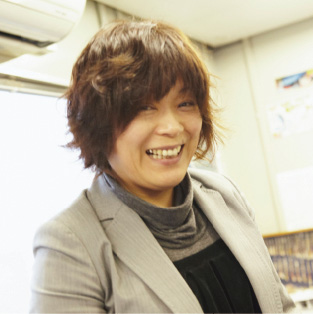

Unmatched freshness and flavor that can’t be beaten anywhere else. That’s the pride of single-line fishing.
On each of the two Kiyomaru vessels, about 25 fishermen board and use barbless hooks to individually catch toro skipjack and toro albacore. Among the fishermen, there are some fierce ones who can catch one fish in just a few seconds on average. The annual catch of the two Kameyomaru vessels is approximately 3,600 tons, but it’s hard to imagine the scale of the large mountain formed when stacking up each individual fish.
The caught fish are bled and immediately frozen while still alive onboard. The bleeding process is crucial as it removes any unwanted odor and enhances color retention. Freezing begins by rapidly chilling the fish in saltwater at -20°C. After initial freezing, the fish undergo rapid freezing in a -55°C freezer. This freezing process, which freezes the fish instantly from both the inside and outside, prevents stress on the fish and helps maintain its deliciousness.
Once frozen and turned into “products,” the fish are transported to markets like the Kesennuma Fish Market and the Yaizu Fish Market, where they are auctioned off. Kanesimeichi’s bonito and tuna sold in stores after auctions are labeled with a seal that reads “Single-Line Fishing Kameyomaru.” This seal serves as proof of freshness, quality, and deliciousness.
“Recently, the deliciousness of bonito has been recognized again, and its value as sashimi has increased,” proudly states Mr. Oyama. He has a strong commitment to delivering the fish to the port while maintaining its deliciousness.
“Someday, it would be nice to go out to sea together with the Kameyomaru, wouldn’t it?”
Mr. Oyama is the sixth generation of Kaneshimeichi. Born and raised in Kesennuma, he lived in Tokyo only during his four years of university. Upon graduation, he returned to Kesennuma and joined Kaneshimeichi. He spoke about Kesennuma with great affection, describing it as a place where the fish is delicious and the people are full of warmth. Despite facing difficulties, Mr. Oyama has always maintained a sense of mission with the belief that “things will work out somehow,” overcoming challenges along the way. When asked about his dreams for the future, he expressed a desire to cherish and sustain the local industry so that people can continue to live in the area. Then, after a moment’s thought, he added, “I’d like to go out to sea on the Kameyomaru.” His son, and also the executive director, Katsuro Oyama, couldn’t help but smile wryly, saying, “You can be in charge of turning screws or fixing the air conditioning.” It’s wonderful how they take pride in their work and dream about it. It was the biggest smile of the day.
